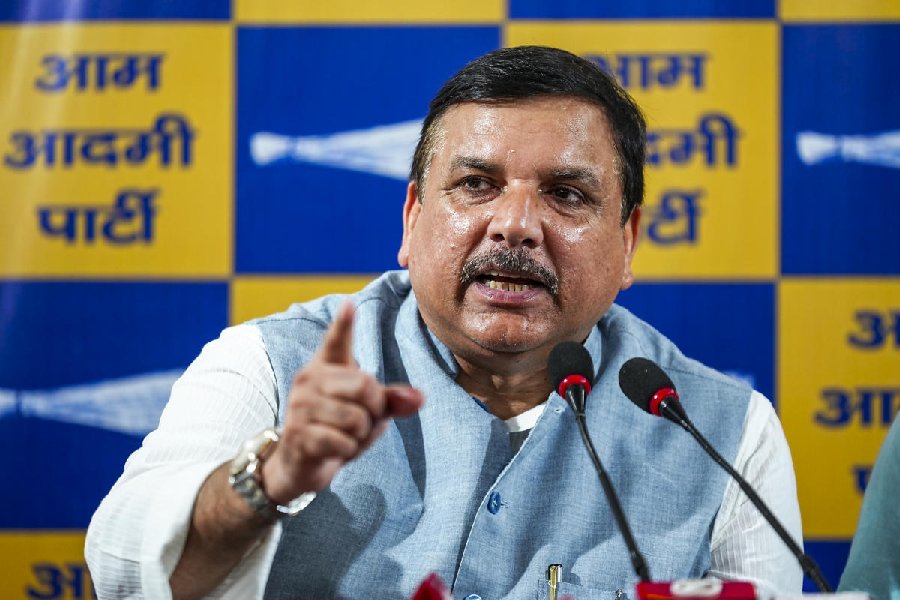BABASAHEB: MY LIFE WITH DR AMBEDKAR By Savita Ambedkar, Vintage, ₹599
Babasaheb: My Life with Dr Ambedkar is no ordinary tribute. It goes beyond that; it is a set of deeply personal reminiscences by his wife, Dr Savita Ambedkar, of their time together. In penning down her life with Ambedkar, the writer affords readers a rare and close glimpse into Ambedkar the human being, beyond his legendary public persona. Ambedkar is known as one of the most important framers of the Indian Constitution, as a towering leader of Dalits, and as the torchbearer and defender of the oppressed. Relatively less is known about his personal life and travails.
Ambedkar suffered from chronic health problems and loneliness following the death of Ramabai, his first wife. Later, Sharada Kabir, or Savita Ambedkar as she was known after her marriage to Babasaheb in April 1948, would play a seminal role in his life as a nurturer, caregiver, and an intellectual companion. Savita was a doctor and physician, and she tended to an ailing Ambedkar, enabling him to do his life’s work of building the Constitution and the nation, even as his body was failing him. Savita recalls that when she first met Ambedkar, his body had been hollowed out by diabetes, rheumatism and blood pressure, and he was altogether lonely. “Behind the historic work, was a human being on the verge of complete collapse, with no peace of mind, neurotic pain and sleepless,” she writes.
The book recounts the circumstances under which Savita and Babasaheb met, and the subsequent blossoming of their romance and courtship. Also included is the correspondence between the two. Letters show Savita and Babasaheb affectionately referring to each other as ‘Raja’ and ‘Sharu’, respectively, and contain the loving and intimate exchanges of a couple courting each other and on the threshold of marriage. The tiffs, friction and disagreements are not left out either. The book explores the rhythm of their married life, compelling readers to chuckle and wonder in equal measure. Take, for instance, Savita’s description of how Ambedkar liked his tea. “English-style tea for Doctor Saheb: the brew in one pot, milk in another and sugar in a separate container, so that the three could be mixed in the desired proportion.” We also get to read about Ambedkar giving precise instructions to the cook on how to make biryani. Readers are made aware of how unwell Ambedkar really was and of his fragile health, despite which he kept burning the midnight oil.
Savita reminds readers that Ambedkar was “carrying the responsibility of running the law ministry and doing the work of drafting as the chairman of the Drafting Committee of the Constituent Assembly meant that he carried dual responsibilities on his shoulders. That required him to be busy night and day, despite his seriously compromised state of health.” Even though his health steadily deteriorated, “there was never a break in his unremitting reading and writing.” Ambedkar left behind a substantial corpus of literature, including his pathbreaking study on the Buddha’s life and philosophy, Buddha and his Dhamma, which was published after his death. His wife, Savita, played a crucial role in tending to Ambedkar’s ailments as he wrote and also contributed to the book.
Savita was not only Ambedkar’s caregiver but also his intellectual discussant on women’s rights, the Hindu code bill and Buddhism, in which she matched Ambedkar’s interest and passion. The writer provides observations on the divisions in the Dalit movement after Ambedkar’s death and expresses her sense of betrayal at being denied leadership in the movement. We are also informed about Ambedkar’s devastation upon losing the 1952 elections.
The success of Babasaheb lies in infusing the narrative of Ambedkar with flesh and blood and making him come alive. It is an important addition to existing literature on Ambedkar’s life and work, made more widely accessible by Nadeem Khan’s English translation of the book from the Marathi original. Asthe Ambedkar scholar, Scott R. Stroud, pens in his foreword: “… Yet for some reason, this book, and Savita Ambedkar herself, have largely been left out of the Ambedkar, Buddhism and anti-caste research pursued in English”










